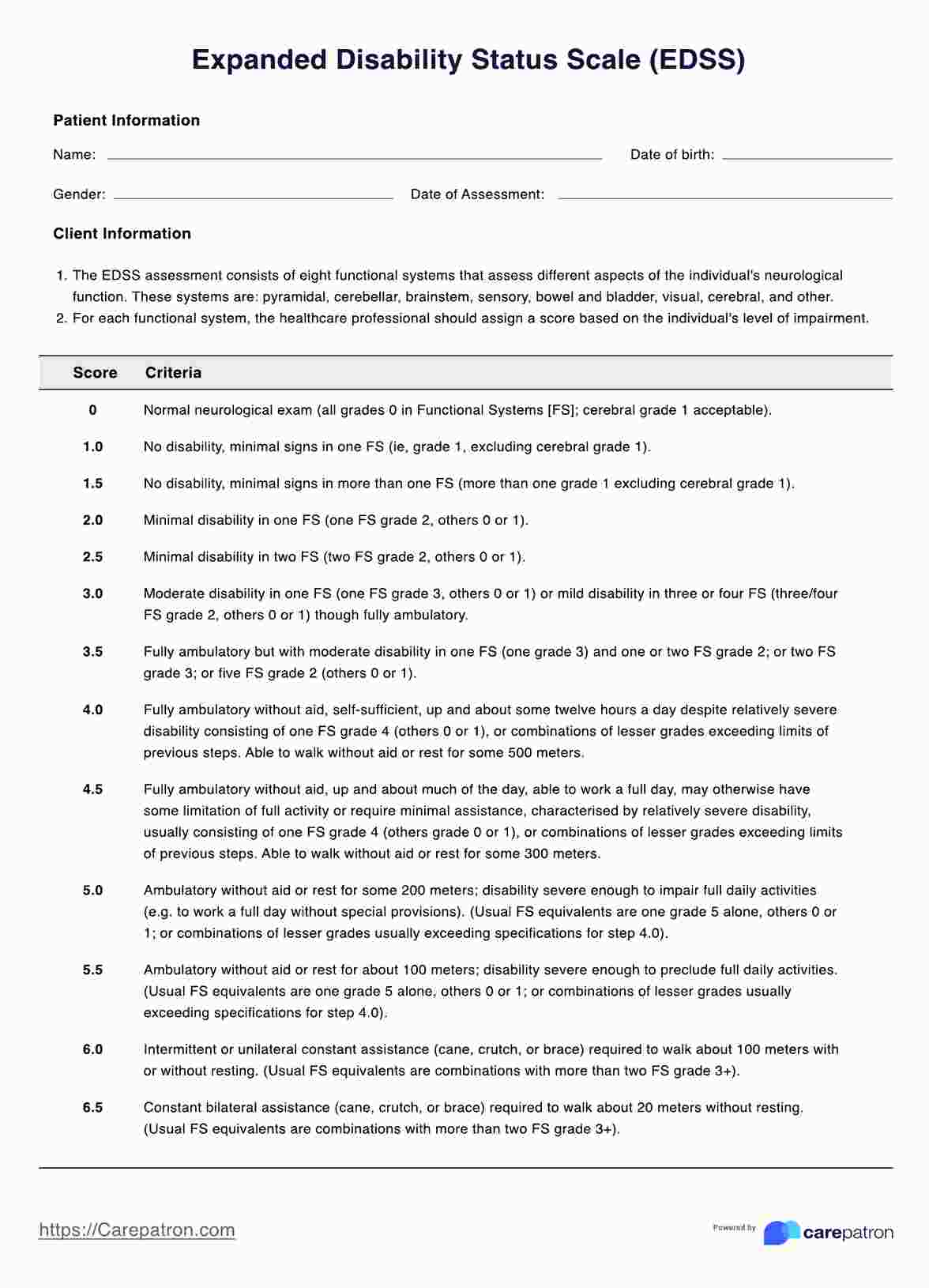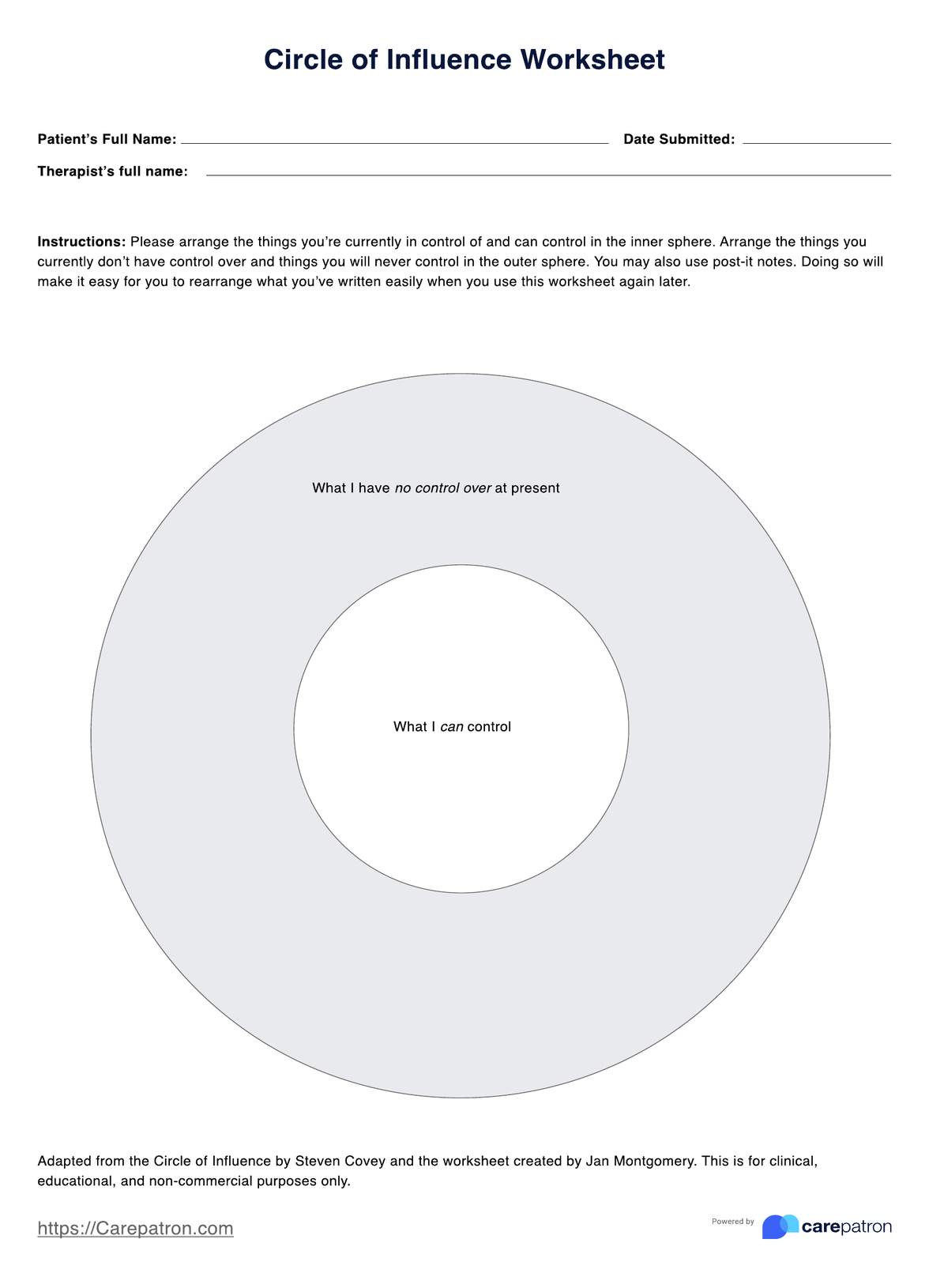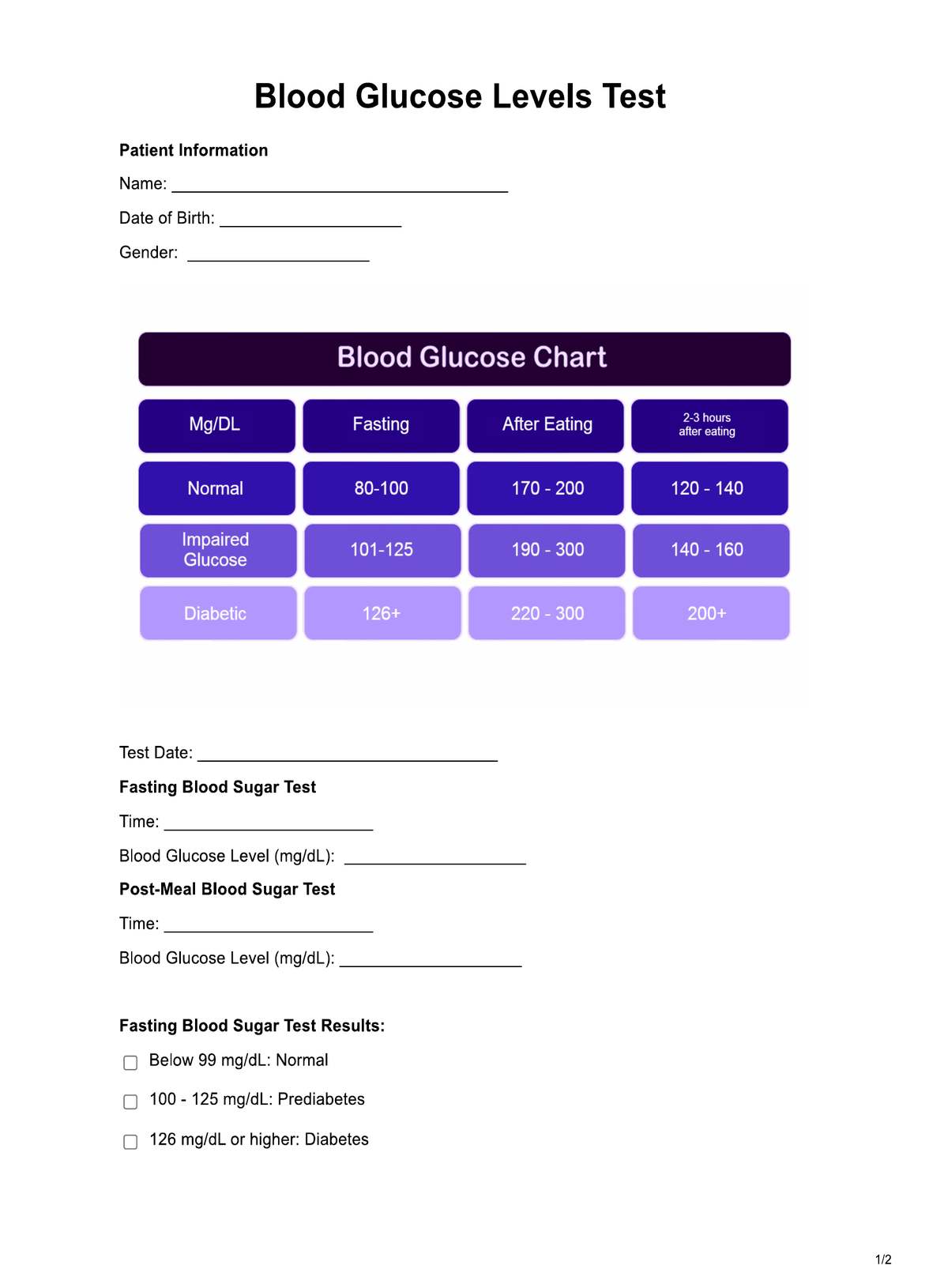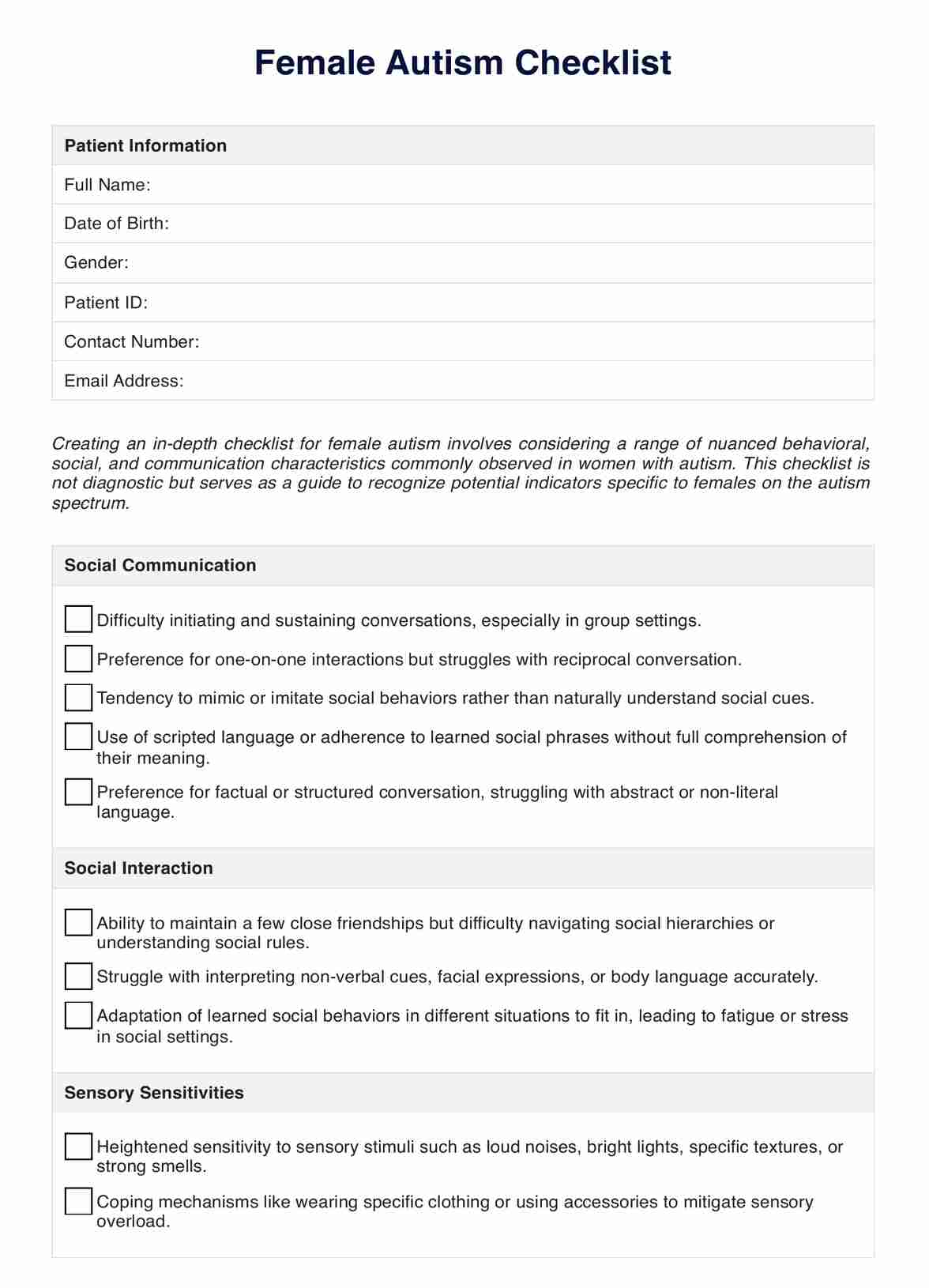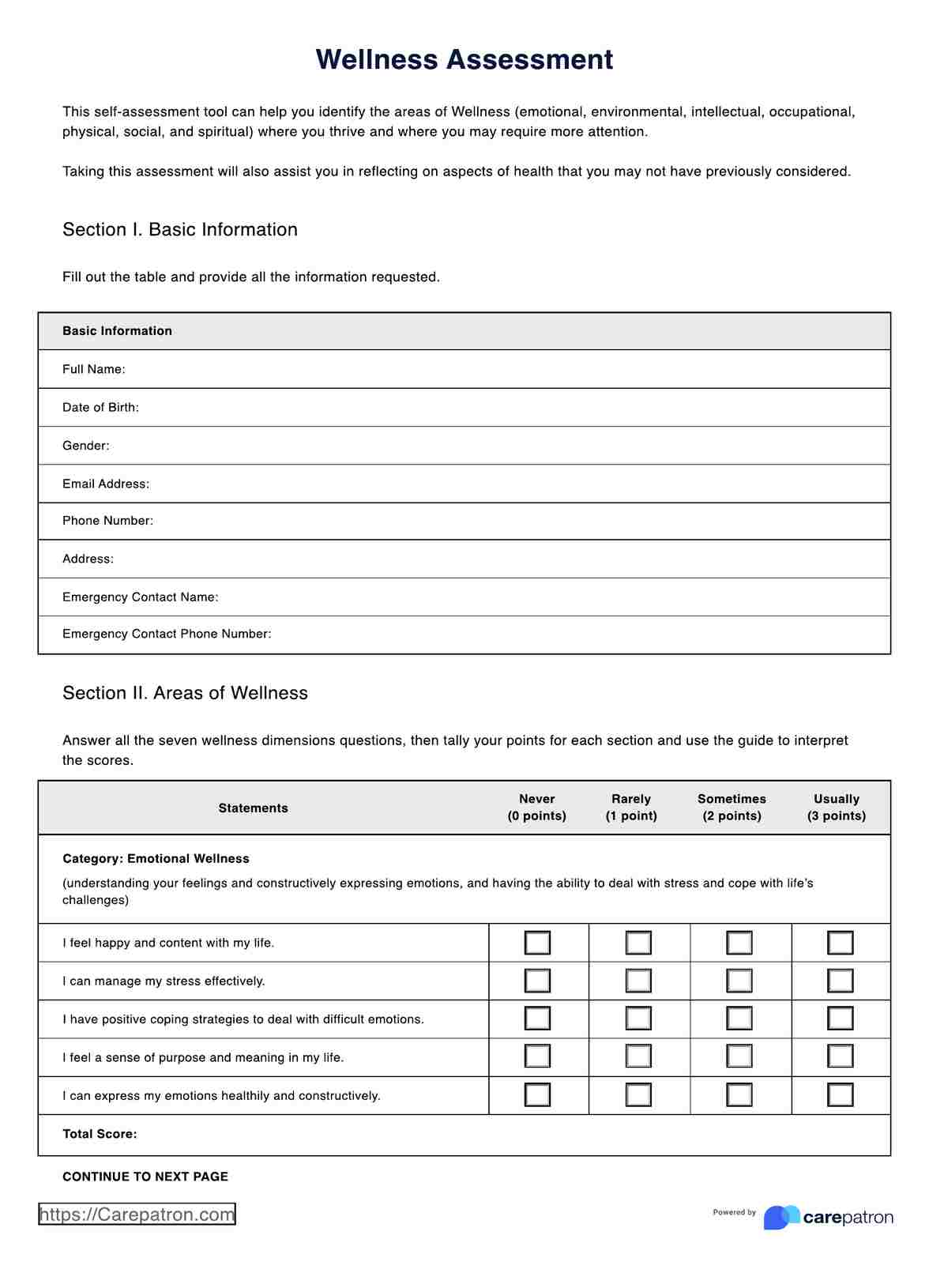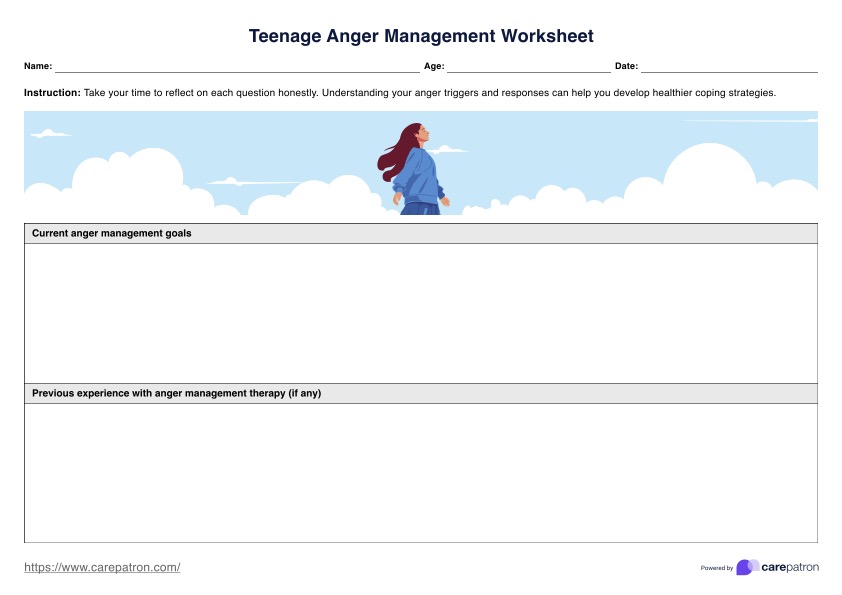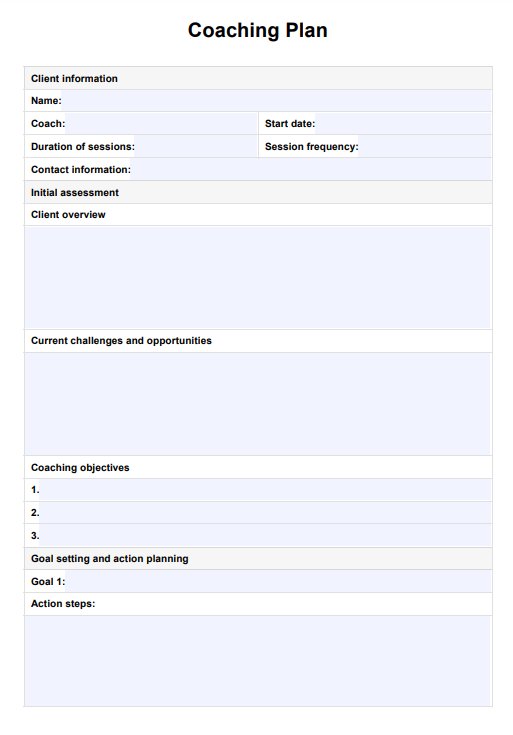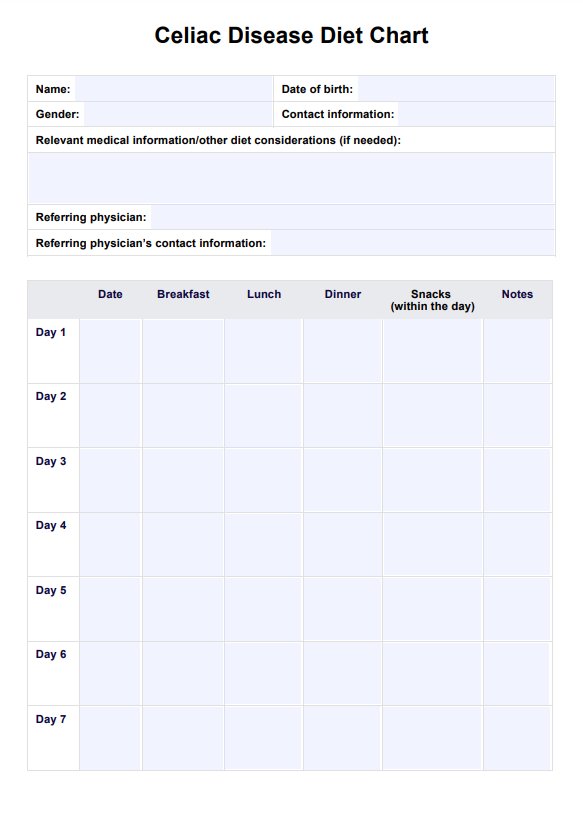PTSD Coping Skills PDF
Learn what PTSD is and provide PTSD patients with a PTSD Coping Skills handout so they know what they can do when dealing with PTSD symptoms.


A brief introduction to post-traumatic stress disorder (PTSD)
Trauma, in the context of mental health, is a person's intense (sometimes extreme) emotional and psychological response to a specific situation or experience they unfortunately went through. We say "unfortunately" because this experience will likely be described as distressing, overwhelming, violating, or horrifying.
Examples of such situations or experiences include losing your house and all your possessions in a fire or due to a natural disaster (e.g., earthquake or tsunami), witnessing the horrors of war in person, getting sexually harassed and assaulted, getting slashed in the face because of racial hatred, and almost drowning.
Such situations and experiences may leave emotional and psychological scars on the people who had to go through or witness them. These scars will prevent them or at least make it difficult for them to cope, work through, and move on from what happened.
Post-Traumatic Stress Disorder (PTSD) is a type of disorder that one may develop as a result of going through something traumatic. It is characterized by intense emotional and physical reactions to their trauma when they are reminded of it. They will likely relive memories of a traumatic event through flashbacks or nightmares, become depressed and anxious, and feel various negative emotions at once. They might even develop anxiety and depression as a result.
PTSD Coping Skills PDF Template
PTSD Coping Skills PDF Example
What are examples of PTSD symptoms and signs?
Those who have trauma and PTSD will likely develop a wide variety of symptoms and signs as a result of a traumatic experience or witness traumatic events.
The following risk factors can contribute to developing PTSD:
- If the traumatized person doesn't receive emotional and social support after a traumatic experience
- If they have to deal with other distressing situations or experiences after the traumatizing experience, like losing their home, getting laid off from work, or losing a loved one or friend
- If they can't cope with feelings of helplessness and fear
- If they have traumatic childhood experiences and memories
If the traumatized person develops PTSD, they will likely have distressing and intrusive thoughts, flashbacks, recurring memories and nightmares about their traumatic experience, and physical signs and symptoms like excessive sweating, increased heart rate, high blood pressure, and headaches. A simple word or being close to where a traumatic experience took place can trigger all of these.
They might also have the following signs and symptoms:
Cognitive and mood-related:
- They have difficulty expressing any positive emotions they feel and may even reject them
- They feel a wide variety of negative emotions like shame, guilt, disgust, anger, hatred, and spite
- They blame themselves or others for what happened
- They might have bouts of dissociation
- They might have gaps in their memory about the traumatic experience they went through
Avoidance-related:
- They might lose interest in social gatherings
- They might start isolating themselves
- They will likely avoid the place where the traumatic experience happened
- They will likely avoid people or objects that are involved or related to the traumatic experience
Behavior-related:
- They become irritable and easily angered
- They feel tense even when they're not supposed to
- They have their guard up all the time and become easily startled
- They might have aggressive outbursts or exhibit reckless and destructive behavior
- They have difficulty maintaining their focus
- They have a hard time sleeping
Why are coping skills necessary for individuals with PTSD?
For individuals with PTSD, they need to develop healthy coping skills and mechanisms. By having such skills and mechanisms, individuals can develop healthy ways of warding off trauma-related intrusive thoughts and nightmares and prevent themselves from becoming so overwhelmed that they become anxious, distressed, and depressed.
Healthy coping skills and mechanisms are essential when it comes to working through traumatic experiences and PTSD because they give individuals the opportunity to ward off but not necessarily avoid them. These skills and mechanisms can help individuals confront their trauma and manage their triggers in ways that don't disrupt their daily lives.
What are examples of PTSD coping strategies and skills?
Here are examples of PTSD coping strategies and skills that an individual can do to cope with their trauma and PTSD symptoms healthily:
- Deep breathing exercises: such exercises as the Square Breathing method and the 4-7-8 Breathing method can help calm the nerves and lessen the impact of anxiety on the individual, whittling it down until they're relaxed.
- Grounding: This specific skill revolves around focusing on the person's particular surroundings through their five senses to help them focus on the now and where they are to prevent themself from dissociating and being hounded by flashbacks and intrusive thoughts.
- Journaling: keeping a journal is akin to holding a mini-safe space because it allows individuals to discuss their days and what they must grapple with because of their trauma without worrying about judgment. It also allows them to unpack their thoughts, feelings, and experiences.
- Exercising: By exercising regularly, an individual will develop an improved mood and feel healthier. Exercising will also reduce the stress they feel.
Please note that not everyone will have the same coping strategies and mechanisms. What skills and strategies an individual needs will depend on their trauma and how severe their PTSD symptoms are. One person's specific coping mechanism may not work for others.
What are the benefits of effective PTSD coping skills?
It's essential for individuals with PTSD to practice healthy coping skills and develop healthy coping mechanisms for the following benefits:
- Emotional regulation: PTSD coping skills can help people regulate their emotions when they are reminded of their trauma. They can prevent them from becoming distressed and anxious by keeping negative emotions at bay, at least enough to not overwhelm them.
- Resilience improvement: healthy coping skills and mechanisms can eventually make the individual with PTSD more resilient because they can help them recover quickly after an episode of being distressed by their trauma. They will ultimately feel more empowered and develop a sense of control over their mental well-being.
- Prevent disruption: PTSD symptoms can be so distressing to the point that they can significantly disrupt a person's day, keeping them from doing what they need to do. Healthy coping skills and mechanisms can help with maintaining focus to prevent their trauma from interfering with their activities, work, and relationships.
How is PTSD treated?
PTSD treatment will depend from person to person based on what their trauma is and how severe it is. It may involve the following:
- Coping skills training: in line with this guide, it would be best for individuals with PTSD to undergo coping skills training so they can learn how to healthily manage and confront symptoms associated with PTSD to build resilience.
- Cognitive behavioral therapy: this is a type of psychotherapy that's widely used by specialists who treat PTSD. Through this therapy, PTSD patients will learn how to confront their trauma through safe exposure to it and by learning skills like cognitive restructuring to help identify problematic thoughts and behaviors and replace them with more helpful ones.
- Taking medication: for PTSD patients with anxiety and depression, antidepressants and anti-anxiety medication can help lessen the effects of those mental health problems and even help improve sleep.
Even something as simple as making lifestyle changes can help people manage PTSD. Adding regular exercises, as well as making healthy dietary changes, can help lessen the effects of stress on a person caused by PTSD.
Exercising can even be added as part of the coping strategies.
Other PTSD resources that you can use
If you're a mental healthcare professional, here are other PTSD resources you can take advantage of:
- DSM-V PTSD checklist: before diagnosing a patient with PTSD, it would be best to conduct a comprehensive examination of them first. You must also cross-check your findings with the criteria for PTSD set by The Diagnostic and Statistical Manual of Mental Disorders. This checklist helps you check what aspects, signs, and symptoms of the patient fit the criteria.
- PTSD worksheets: PTSD worksheets can help individuals with PTSD to unpack their trauma and apply anything they've learned in whatever psychotherapy they're taking. This one asks individuals to discuss how their trauma has affected them.
Commonly asked questions
It's not guaranteed they can, but they can at least lessen their impact, especially over time. They can also build people and make them more adaptive.
It depends on the person. Some people with healthy coping skills become more resilient and adaptive and improve in a matter of weeks. That's not guaranteed for all people, though. Some will take months or years. The key is consistency.
Besides searching online resources, we recommend seeing mental healthcare professionals like psychiatrists and therapists (especially those specializing in cognitive therapy). Joining PTSD support groups is another good choice because people can share what coping skills and mechanisms they use, and others can try them.


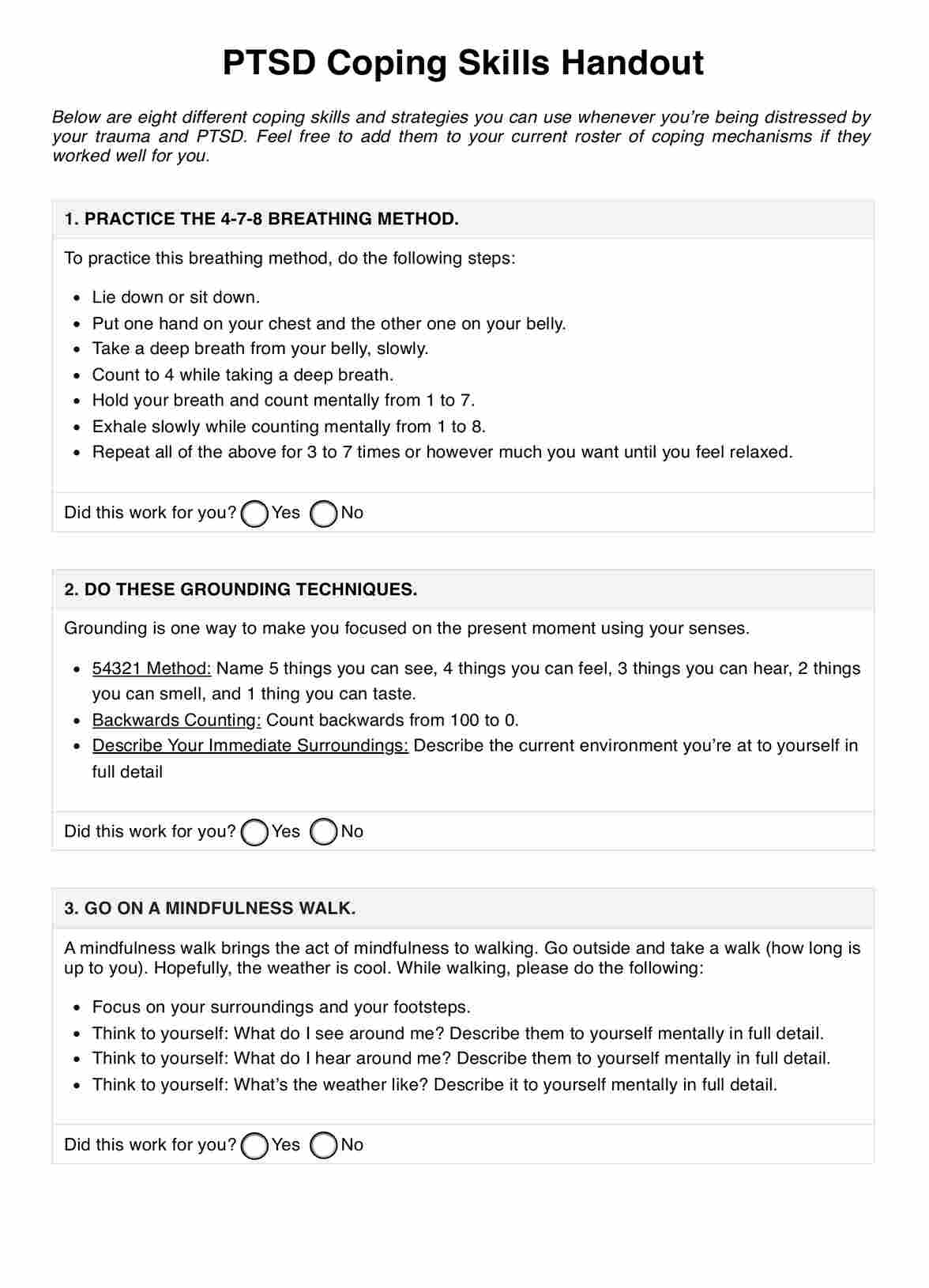
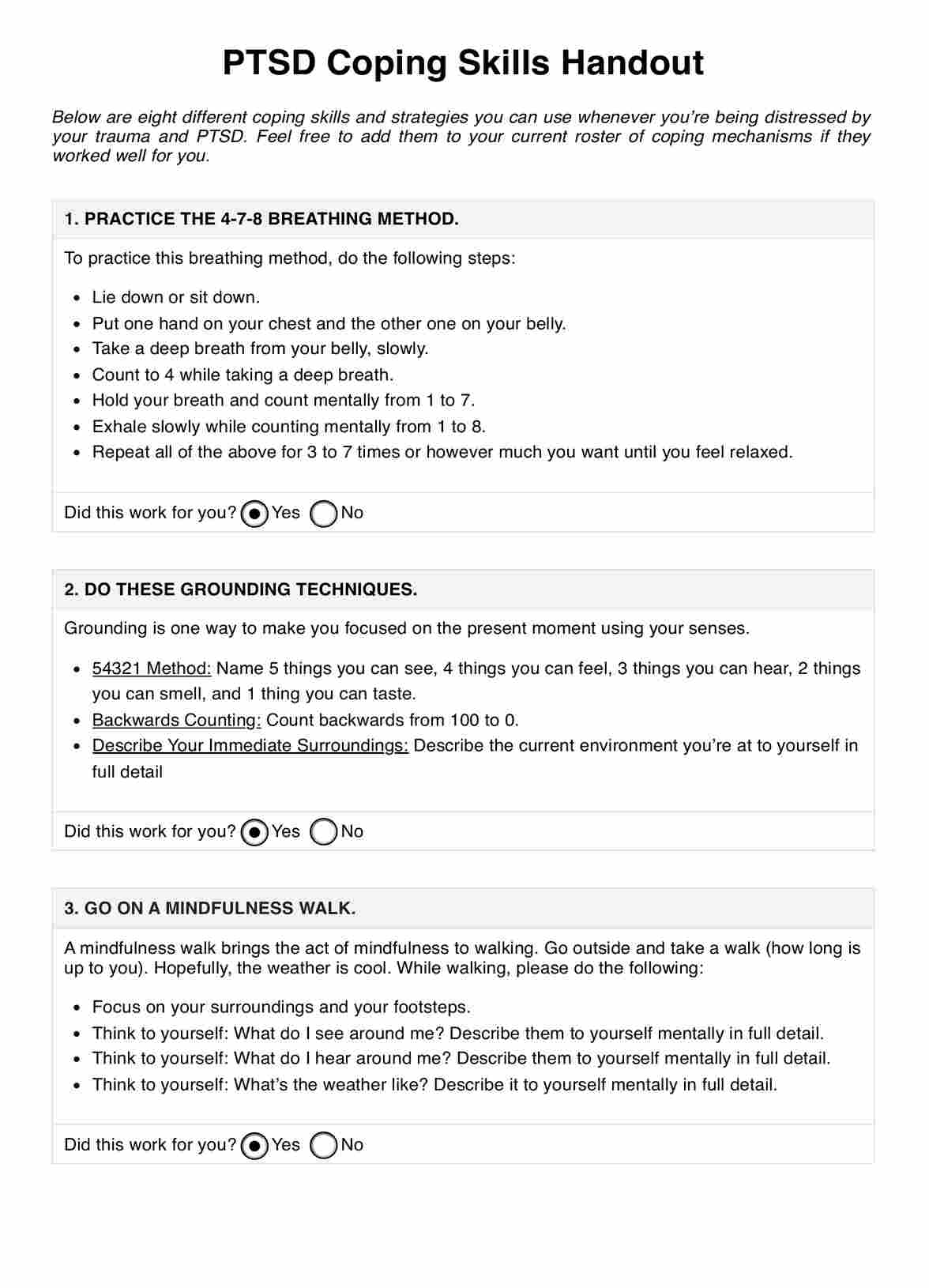

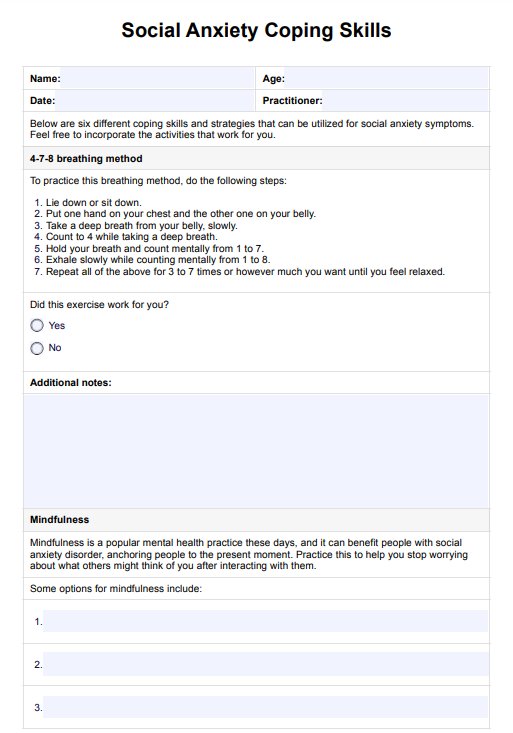
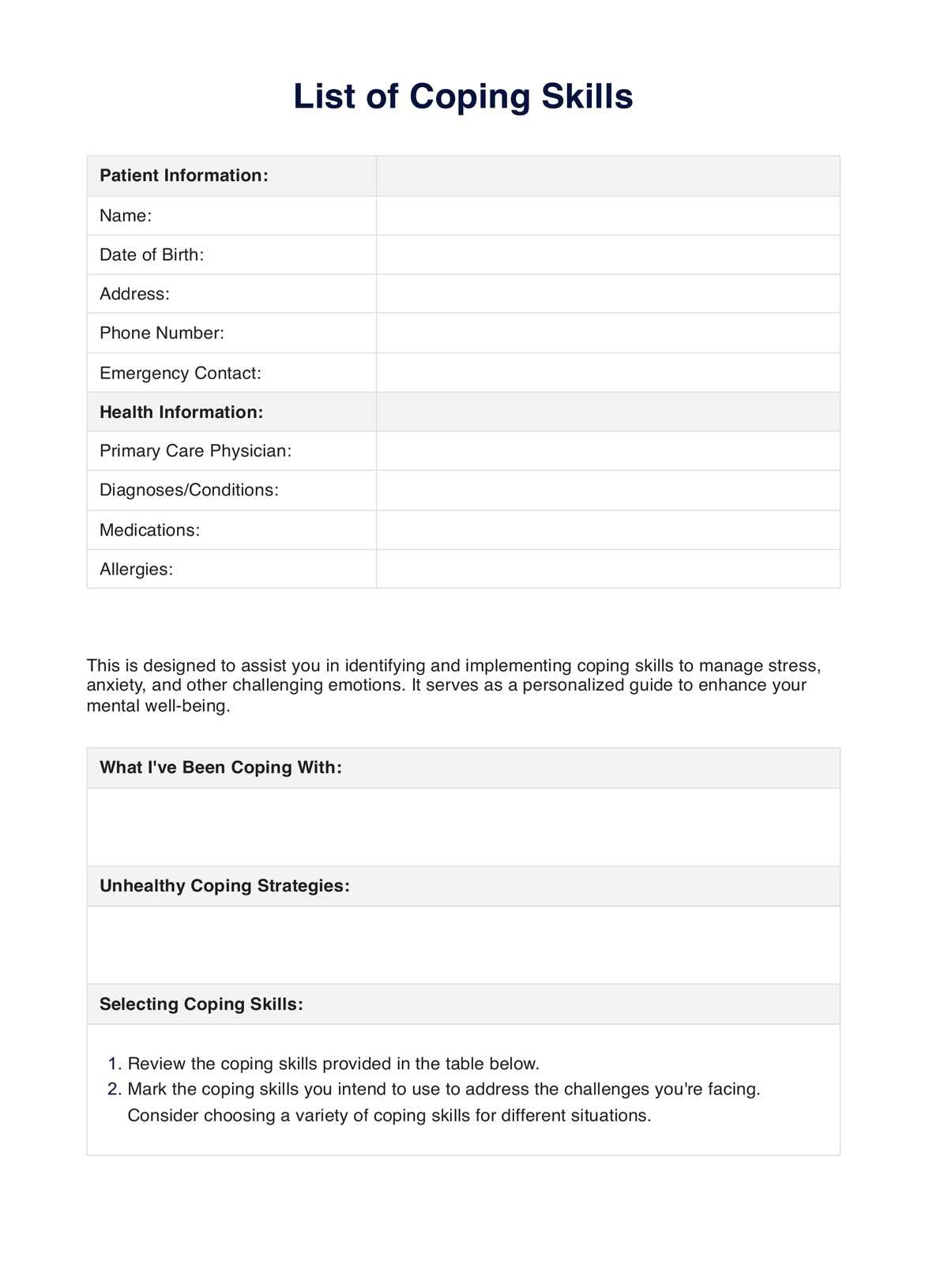
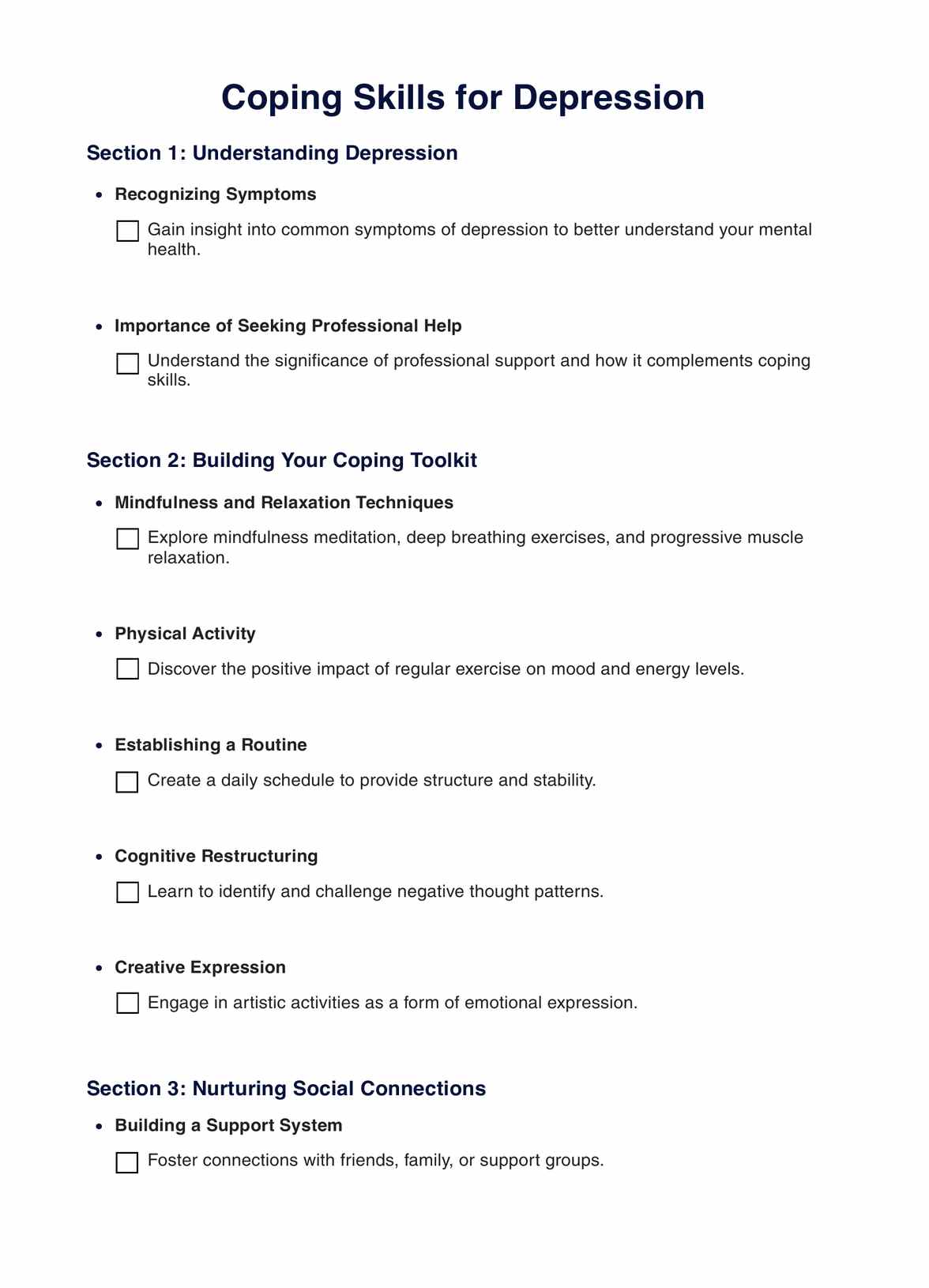
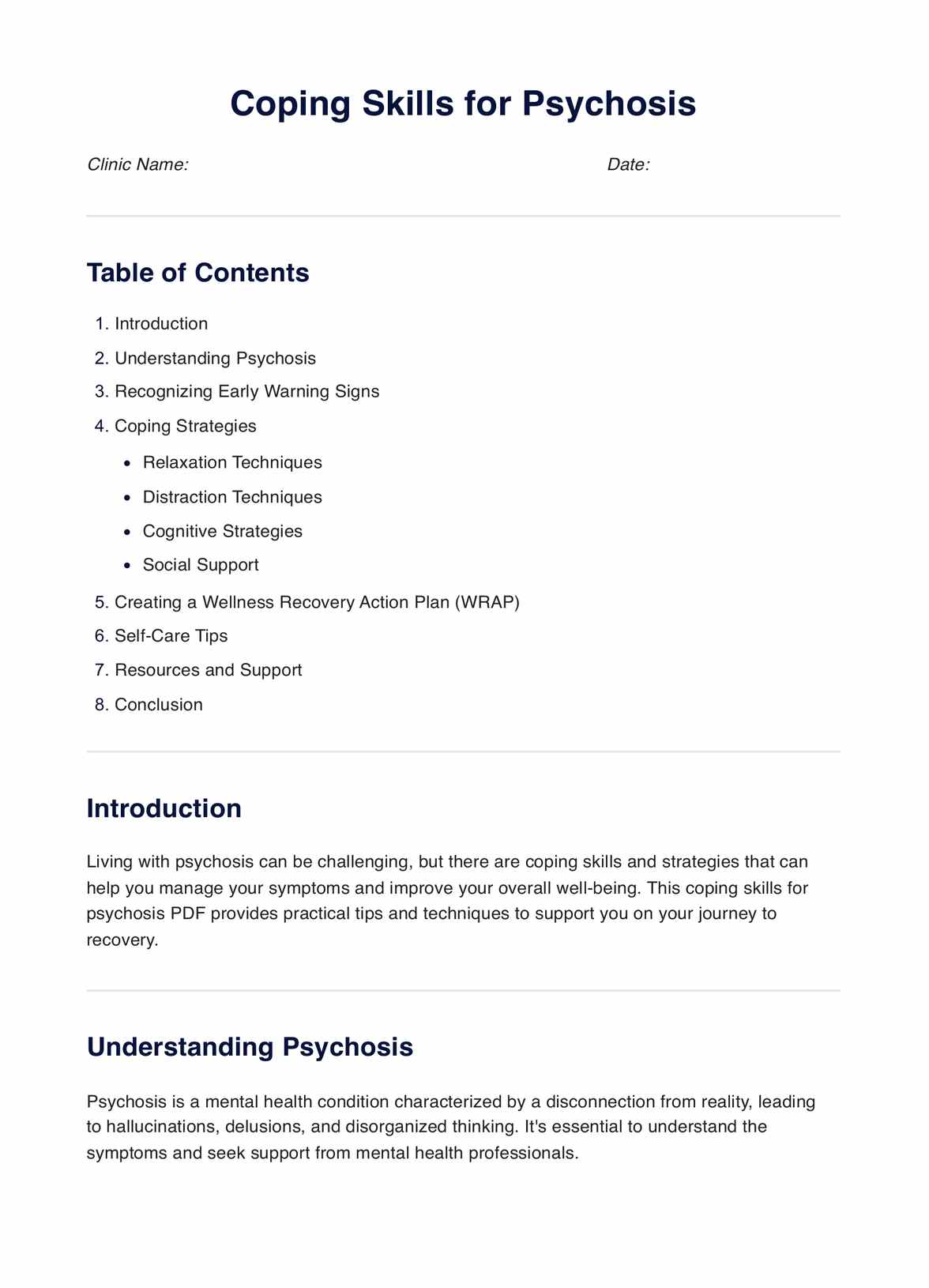
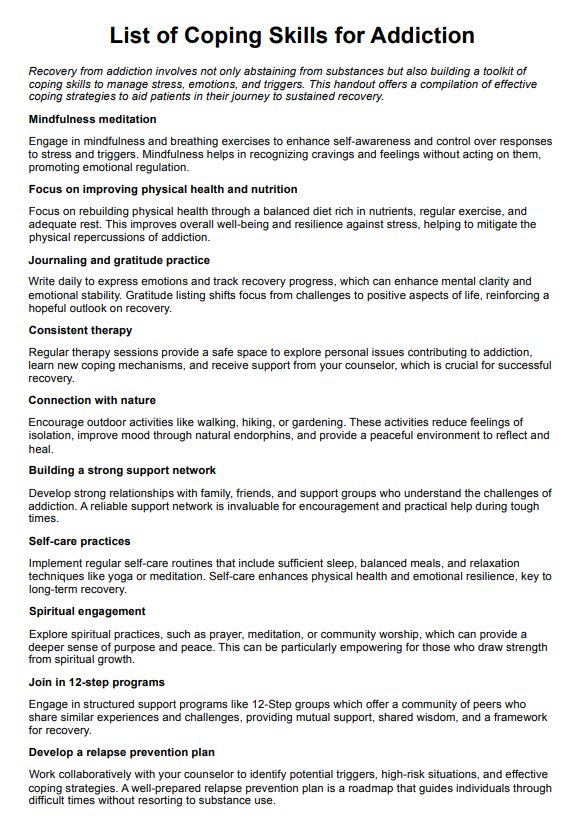



















-template.jpg)















































































